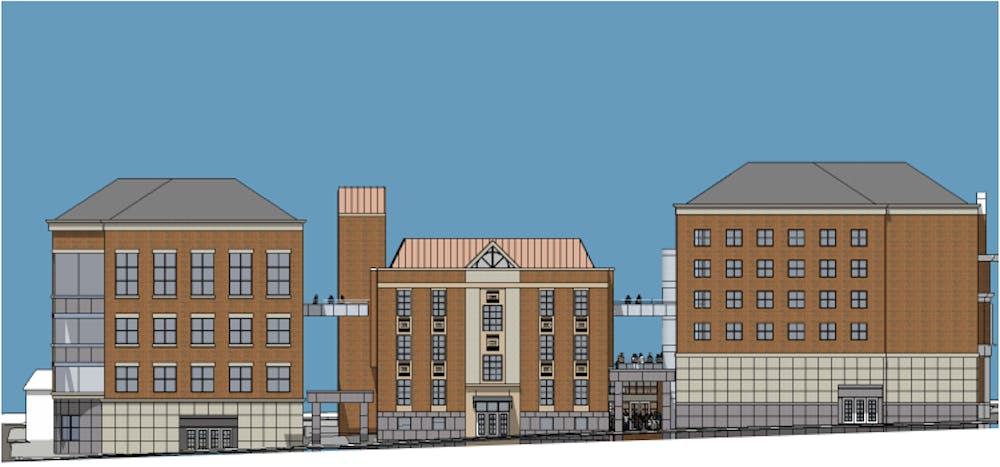In the past 12 years, Ohio University administrators have brought forth two recommendations to demolish campus buildings, according to OU President Roderick McDavis.
One of those recommendations — for the President Street Academic Center on the corner of Congress and President streets — was approved Friday by the university’s Board of Trustees.
The other recommendation to demolish Cady Hall, Foster House and Brough House on OU’s South Green was previously approved, and is set to start this summer.
The board also passed a resolution to raise tuition rates $196 for next academic year’s incoming class. Out-of-state students will also see an additional $500 surcharge. This is the seventh consecutive year tuition has been raised by the university.
Despite protest from Athens Mayor Steve Patterson, the Athens City Council and members of the Athens Historical Society, the President Street building’s demolition is set to take place. Construction on the new building will start May 2 and is expected to be complete by Aug. 12, according to a previous Post report.
The cost to raze the structure, which was built in 1911 and has sat vacant since 2003, is estimated to be between $15 and $20 million. The alternative option of renovating the building, which was suggested heavily by the historical society, was estimated to cost between $8 to $10 million.
But price was not a factor in administrators’ and trustees’ decision.
“My understanding is that if we had renovated the building in its current form, that the cost of that probably would have been less than if we had to (demolish) the building,” Stephen Golding, vice president for Finance and Administration, said Friday. “It is about creating space that is usable in the 21st century for teaching students and for providing for the kinds of spaces that faculty need in order to do what they’re doing.”
The current President Street building sits next to the Computer Services Center and Copeland Hall, both of which are used by OU’s College of Business. The new structure will also be used by the college and will include increased flexibility for college programs, taller ceilings and “better views” of campus, according to 2015 planning documents from Columbus-based Feinknopf Macioce Schappa Architects.
In the past year, the College of Business has seen a large increase in class size, according to a previous Post report.
Following a change in recruitment tactics, the college’s current freshman class of more than 600 students is 33 percent larger than last year’s freshman class.
“That building, after thorough examination … was determined to not meet the needs of the College of Business,” Golding said. “(Renovation) would have been unsatisfactory in the amount of space and the quality of the space ... the decision to rebuild is actually less about what the building would cost or not cost to renovate.”
Golding said funds for the new buildings will come specifically from the College of Business’ budget and not from university assets. A fundraising campaign for that initiative is already underway, Golding said.
{{tncms-asset app="editorial" id="a46e43dc-c066-11e5-a8df-5b2f68d90b55"}}
Both board members and administrators were firm in asserting that the decision was based on the university’s mission of advancing academics.
“We have renovated a large portion of the buildings that we have; we continue to renovate buildings going forward,” McDavis said. “The PSAC building came to us as a recommendation from the dean and faculty from the College of Business about what would be in the best interest of educating future College of Business students.”
Several other resolutions also passed Friday, including one to monitor and evaluate low enrollment courses. Those courses now face the possibility of being combined, eliminated or taught online only, among other options.
@dinaberiner






